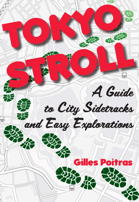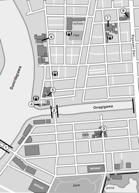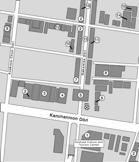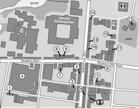











Tokyo Stroll Supplement: Adachi ku

This page is for locations in the Adachi ku area of Tokyo. This neighborhood is not part of my book Tokyo Stroll.
For information on Tokyo Stroll and this web supplement see Tokyo Stroll Supplement home page
For users of the Organic Maps, Maps.Me and Google Maps apps the items below have bookmarks you can import into those apps to make navigation easier.
Instructions and links are on the Viewing Locations in Organic Maps, Maps.Me, Google Maps, or Google Earth page.
Some entries on this page may include a note that says "Description to be added soon ." These entries are for items I felt should be listed even if the description is not ready to assist those who wish to plan a trip. When possible I included a link to an official web page, I suggest also doing web searchs for more information.
Adachi ku (足立区):
Founded in 1932, before that date this was a suburban area of Tokyo city called the Minamiadachi District. Adachi ku lies north of the Sumidagawa and on both sides of the Arakawa. 6,000 years ago this area was underwater, as the climate changed the water receded and parts that surfaced became settled in the later Jōmon Period. Objects from the Kofun Period, including iron work from Western Japan have been excavated. At the start of the Kamakura Period the Adachi clan controlled the area, later the Chiba clan held it until the Sengoku Jidai. From the Edo Period onwards the area evolved from an agricultural one to the present urban environment.
NOTE: Some locations in this page are a little distance from the NEAREST TRAIN/SUBWAY STATION so consider also using buses or walking.
Official pages for each of the ku of Tokyo will have sections of interest to visitors. These will likely be labeled as dealing with culture, tourism, or events.
Adachi-ku official site: https://www.city.adachi.tokyo.jp/index.html
Adachi City Museum / Adachi Kuritsu Kyōdo Hakubutsukan (足立区立郷土博物館)
This museum focusses on local history and culture.
Exhibition Hall 1 covers the early history of the area when it was composed of farming villages. Included are exhibits on agricultural techniques and the distribution of food to the city of Edo, later renamed Tokyo. There is a children's hall that includes items that can be handled.
Exhibition Hall 2 is devoted to the development of Adachi ku as an urban area with the spread of housing and industry. Included is a replica of a house from those times.
The 2nd floor gallery has a focus on the area as a local tourist destination starting in the Edo Period with people going to enjoy the local festivals and sights. The manufacture of ceramics, paper, and dyed goods was established well before modern factories were built in the area. Assess to the Arakawa for water and the transportation of goods was a major factor in this. The industrial base make the area a target in the bombings of WWII
The grounds include a Japanese garden is on the grounds. There is a gift shop with a variety of locally themed items including exhibition catalogs.
The web site of the museum is rich in information on the history of Adachi ku and is worth reading.
NEAREST TRAIN/SUBWAY STATION: Kita-ayase Station (Tokyo Metro Chiyoda Line), Kameari Station (JR Joban Line) as the station is quite a distance from the museum it is recommended you take a bus.
WEB: https://www.city.adachi.tokyo.jp/hakubutsukan/index.html
Adachi City Urban Agricultural Park / Adachi Ku Toshi Nōgyō Kōen (足立区都市農業公園)
Description to be added soon
NEAREST TRAIN/SUBWAY STATION: Nishiaraidaishi-nishi Station (Toei Nippori-Toneri Liner), Yazaike Station (Toei Nippori-Toneri Liner)
WEB: https://www.ces-net.jp/toshino/
Adachi Park of Living Things / Adachi ku Seibutsuen (足立区生物園)
A small zoo and aquarium with an emphasis on smaller animals. Originally founded as a firefly breeding area it expanded into its present state. The animals range from insects to sheep in size, exhibits are kids focused. The outdoor areas of the park and the insect dome are landscaped to attract insects such as butterflies and local birds. There is also a fishing pond, you have to bring your own gear. Events are scheduled throughout the year and often centered on the season. The museum shop has the expected plushies, t-shirts, and key chains, an interesting variety of both, it also sells biological samples, often bottled, when available such as bird feathers, pirarucu scales, insect pupa, exfoliated insect shells, and at times even molted snake skins.
CLOSED: December 29 - January 1. Mondays, if Monday is a holiday the park is open and closed on Tuesday.
NEAREST TRAIN/SUBWAY STATION: Takenotsuka Station (Tōbu Skytree Line)
WEB: https://www.seibutuen.jp
Chōanji (長安寺)
Chōanji was relocated from central Tokyo as part of the reconstruction plan after the Great Kantō Earthquake in which 14 temples were moved to the Ikō area.
NEAREST TRAIN/SUBWAY STATION: Takenotsuka Station (Tōbu Skytree Line)
Eijuin (榮壽院)
Eijuin was relocated from central Tokyo to the present site as part of the reconstruction plan after the Great Kantō Earthquake.
NEAREST TRAIN/SUBWAY STATION: Takenotsuka Station (Tōbu Skytree Line)
Higashi-Ayase Park / Higashi-Ayase Kōen (東綾瀬公園)
This park opened in 1966. Some sixteen hectares in size and starting at Ayase Station and south of the Tokyo Budōkan, which is part of the park, this park has an unusual "inverted U" shape. From the south there is a long walking trail in a series of seven blocks that include a playground and streams. As you reach the northern part the trail shifts to the east and opens up into a large area, then further east the park contracts and shits towards the south to again open up into the largest portion of the park. On the south of this portion it continues in a series of six blocks with a walking trail. In the park, besides the Tokyo Budōkan, there are three baseball fields, tennis courts, a gateball court, and a heated pool. For flower viewing there are cherry blossoms, red spider lilies, roses, and more.
NEAREST TRAIN/SUBWAY STATION: Ayase Station (JR East Jōban Line, and Tokyo Metro Chiyoda Line)
WEB: https://tokyo-eastpark.com/parksearch/higashiayase
Hōjuji (法受寺)
Founded in 922 in what became the Toshima area of Edo. After the Great Kantō Earthquake Hōjuji was merged with An'yōji in Asakusa and in 1935 moved to the present location as part of the reconstruction plan after the Great Kantō Earthquake of 1923. Hōjuji is also known as the location of the famous rakugo ghost story The Peony Lantern. One will find an interesting variety of Jizō statues on the grounds. Keishōin who was the mother of Tokugawa Tsunayoshi, the fifth Tokugawa shōgun is buried in the temple graveyard.
NEAREST TRAIN/SUBWAY STATION: Takenotsuka Station (Tōbu Skytree Line)
Hongyōji (本行寺)
A Jodo Shinshu temple of the Honganji school, full name Shōkensan Hongyōji. Hongyōji is a branch of a temple that was founded in 1580 in Echizen Province, present day Fukui Prefecture. In 1920 the 15th head priest visited Tokyo and established another temple as a branch in Nippori the neighborhood of Arakawa ku. In 1931 the main temple in Fukui City relocated to Tokyo in the present location with the main hall being completed in 1933, the guest hall dates from 1981. While it is in the same area as the others it is not one of the temples that were moved to the Ikō area during the reconstruction after the Great Kantō Earthquake.
NEAREST TRAIN/SUBWAY STATION: Takenotsuka Station (Tōbu Skytree Line)
Igyōin (易行院)
A Jōdō sect Buddhist temple. Igyōin was founded in Asakusa in 1502, then moved to another part of Asakusa in 1655. After the Great Kantō Earthquake of 1923 Igyōin was relocated from central Tokyo in 1928 as part of the reconstruction plan in which 14 temples were moved to the Ikō area. There are memorial stones on the grounds for Hanakawado Sukeroku the main character from the famous kabuki play Sukeroku, and for the Shōgitai who died at the Battle of Ueno.
ACCESS: The entrance is on the south.
NEAREST TRAIN/SUBWAY STATION: Takenotsuka Station (Tōbu Skytree Line)
WEB: https://igyouin.amebaownd.com
Ikō Hikawa Shrine / Ikō Hikawa Jinja (伊興氷川神社)
One of many Hikawa shrines in Tokyo, a tradition says this is the oldest, the date of its founding is unknown. This shrine was the head shrine for several villages in the area. The spacious grounds are forested with many sub-shrines for example to Sengen, Inari, and Mitsumine. The enshrined kami are Susanoo-no-Mikoto, Kushinadahime-no-Mikoto and Ōnamuchi-no-Mikoto
NEAREST TRAIN/SUBWAY STATION: Takenotsuka Station (Tōbu Skytree Line)
Ikō Ruins Park / Ikō Iseki Kōen (伊興遺跡公園)
Other English translations of the name of this park you may see are Ikō Ruins Park, and Ikō Archaeological Site Park. This park opened in 1993 and is the site where archaeological excavations produced a large amount of items from the Jōmon Period through the early Kofun Period when this area was the site of a settlement. The Ikō Ruins Park Exhibition Hall in the park exhibits several items from those digs. The park also has a pre-Kofun Period square ditch tomb which has been restored, and a replica of a pit dwelling.
NEAREST TRAIN/SUBWAY STATION: Takenotsuka Station (Tōbu Skytree Line), Toneri Station (Toei Nippori-Toneri Liner) You will be a considerable distance from the park.
WEB: https://www.city.adachi.tokyo.jp/bunka/ikoisekikoentenzikan.html
Ikō Ruins Park Exhibition Hall / Ikō Iseki Kōen Tenjikan (伊興遺跡公園展示館)
This hall exhibits many items excavated in and near the Ikō Heritage Park.
Among these are the remains of a boat, jade and carved stone objects, and Sue ware, which was not made in this part of Japan and was likely brought from as far away Osaka. Sue ware was sometimes used in rituals.
CLOSED: December 29 through January 3
NEAREST TRAIN/SUBWAY STATION: Takenotsuka Station (Tōbu Skytree Line), Toneri Station (Toei Nippori-Toneri Liner) You will be a considerable distance from the park.
WEB: https://www.city.adachi.tokyo.jp/bunka/ikoisekikoentenzikan.html
Jōfukuji (常福寺)
A Pure Land Buddhist temple founded in Asakusa in 1656. On the grounds there is some nice landscaping and trees. Jōfukuji was relocated to the present site as part of the reconstruction plan after the Great Kantō Earthquake in which 14 temples were moved to the Ikō area.
ACCESS: The entrance is on the east side.
NEAREST TRAIN/SUBWAY STATION: Takenotsuka Station (Tōbu Skytree Line)
WEB: http://www.joufukuji-adachi.jp
Jōkōji (浄光寺)
A Jōdō Shinshū temple. This is one of the 14 temples were moved to the Ikō area from central Tokyo as part of the reconstruction plan after the Great Kantō Earthquake.
ACCESS: The entrance is on the north side, easily identified by its large roofed gate.
NEAREST TRAIN/SUBWAY STATION: Takenotsuka Station (Tōbu Skytree Line)
Kichijōin (吉祥院)
A Shingon Buddhist temple of the Buzan school. The founding date is unsure documents exist that say both 1288 and 1305. In the Edo Period it was a branch temple of Ninnaji in Kyoto. In the Meiji Period it became a branch temple of Hasedera in Nara. The main statue is of Kongōkai Dainichi Nyorai and said to have been made in the Edo Period. The Tokugawa Shōgunate granted land to the temple and the shōguns used it as a resting place for when they went falconing. When the chief priest visited Edo Castle he used an ajiro kago with an aoi crest, the aoi crest was used by the Tokugawa family. The bell tower dates from 1783. The grounds has a stone hōkyōintō, Japanese pagoda, and a stone kōshintō.
ACCESS: The entrance is on the south side.
NEAREST TRAIN/SUBWAY STATION: Ōgi-ōhashi Station (Toei Nippori Toneri Liner)
Nishiarai Daishi Sōjiji (西新井大師 總持寺)
Description to be added soon
NEAREST TRAIN/SUBWAY STATION: Daishimae Station (Tōbu Daishi Line)
WEB: https://www.nishiaraidaishi.or.jp
Ōgenji (應現寺)
A Jishū sect Pure Land Buddhist temple which is a branch temple of Muryōkōin Shōjōkōji in Fujisawa, Kanagawa Prefecture. The temple's Sanmon Gate, with its gabled and tiled roof, is the oldest wooden building in Adachi ku and is a registered tangible cultural property of Adachi ku. There is also a large lantern on the grounds which dates from 1654.
ACCESS: The entrance is on the south side, easily identified by its tile roofed gate
NEAREST TRAIN/SUBWAY STATION: Takenotsuka Station (Tōbu Skytree Line)
WEB: http://www.ougenji.jp
Rennenji (蓮念寺)
A Jodo Shinshu temple which was relocated here from central Tokyo as part of the reconstruction plan after the Great Kantō Earthquake in which 14 temples were moved to the Ikō area.
ACCESS: The entrance is on the north side.
NEAREST TRAIN/SUBWAY STATION: Takenotsuka Station (Tōbu Skytree Line)
Rokucho Museum Flora (六町ミュージアム・フローラ)
Description to be added soon
NEAREST TRAIN/SUBWAY STATION: Rokuchō Station (Tsukuba Express)
WEB: http://rokucho-museum.sakura.ne.jp
Sekido Museum of Art (石洞美術館)
Description to be added soon
NEAREST TRAIN/SUBWAY STATION: Senjuōhashi Station (Keisei Main Line)
WEB: https://sekido-museum.jp
Sen'nenji (専念寺)
A Jōdō Shinshū temple which was relocated here from central Tokyo as part of the reconstruction plan after the Great Kantō Earthquake in which 14 temples were moved to the Ikō area. The main hall is on the second floor, an elevator is available.
ACCESS: The entrance is on the south side.
NEAREST TRAIN/SUBWAY STATION: Takenotsuka Station (Tōbu Skytree Line)
WEB: http://sennenji.sakura.ne.jp/profile/
Shirahatazuka Shiseki Park / Shirahatazuka Shiseki Kōen (白旗塚史跡公園)
Wooded park that opened to the public in 1987. The location of one of the many 6th century kofun that were found in this immediate area, most were destroyed as the area underwent development after WWII. This particular one is 2.5 meters, 8 feet, tall and 12 meters, 40 feet across. Various terracotta haniwa were found in this location and replicas including a horse, a boat, and a warrior are on display in the park. The kofun is surrounded by a moat and has a small shrine called Shirahata Shrine to Hondawake no Mikoto placed on top. Such a shrine placement is not an unusual feature as later people often treated kofun as sacred places. At one time there were six cedar trees on the mound, after they died they were replaced with pine trees around 1935. The name of the mound comes from a legend that Minamoto no Yoriyoshi and his son, Minamoto no Yoshiie during the Zenkunen War stopped in this area and raised their white banner on the mound, Shirahatazuka means white flag mound.
NEAREST TRAIN/SUBWAY STATION: Takenotsuka Station (Tōbu Skytree Line)
Shōanji (正安寺)
A Buddhist temple that was moved to this location from central Tokyo as part of the reconstruction plan after the Great Kantō Earthquake in which 14 temples were moved to the Ikō area.
ACCESS: Entrance to the south.
NEAREST TRAIN/SUBWAY STATION: Takenotsuka Station (Tōbu Skytree Line)
Shōrakuji (正楽寺)
The present three story building which was designed by Katagihara Tōru Architects and completed in 2013 is very modern. The temple web site says the outside of the building looks more like an art museum than a traditional temple. Most temples will have multiple buildings on a site, the present building brings all those functions into one structure with the visitor center, event space, and office on the first floor, altar room for ceremonies on the second floor, and the residence for the priest's family on the third. Each floor above the first is cantilevered outwards and larger than the one below. Interior elements are both modern and traditional. The temple was not always in this location. As part of the reconstruction plan after the Great Kantō Earthquake it was moved to the present area.
ACCESS: The entrance is on the west side near an intersection.
NEAREST TRAIN/SUBWAY STATION: Takenotsuka Station (Tōbu Skytree Line)
WEB: https://www.shorakuji.com
Tōgakuji (東岳寺)
An independent Sōtō Zen temple founded in Asakusa in 1633, the full name of which is Nanshozan Tōgakuji. The temple was damaged in WWII and in 1961 was moved to the present location in Ikō-Honchō 1-chōme. The famous ukiyo-e print designer Hiroshige (1797–1858), who did The Fifty-Three Stations of the Tōkaidō and One Hundred Famous Views of Edo is buried here to the left of the temple gate. The present tombstone dates from 1958 as the original was heavily damaged in the Great Kantō Earthquake and in the firebombings of WWII. There is also a monument to Hiroshige which dates from 1924 and next to that, on the left, is the grave of John Stewart Happer the man who did much to introduce Hiroshige to the West. To continue the ukiyo-e connections there is nearby is a monument to Hanaya Kyūjirō who published Torii Kiyonaga's famous Haifū Yanagi Daru series.
EVENT: A one-day ukiyo-e exhibition is held every September 6 which is the anniversary of Hiroshige’s death.
NEAREST TRAIN/SUBWAY STATION: Takenotsuka Station (Tōbu Skytree Line)
Tokyo Budōkan (東京武道館)
Designed by architect Rokkaku Kijō and opened in 1990 for promoting martial arts. It hosts competitions and provides facilities for martial arts training as well as in a variety of sports besides martial arts. The arena is 1,972 square meters (34 x 58 meters) with seating for 1,728. There is also a gym, seminar rooms, a Japanese archery range, a shop, a library, and even a tea ceremony room.
NEAREST TRAIN/SUBWAY STATION: Ayase Station (JR East Jōban Line, and Tokyo Metro Chiyoda Line)
WEB: https://www.tef.or.jp/tb/
Toneri iki-iki Park / Toneri ikīki kōen (舎人いきいき公園)
Fanciful playground based on folklore including a red oni slide. Description to be added soon
NEAREST TRAIN/SUBWAY STATION: Minumadai-shinsuikōen Station (Nippori-Toneri Liner)
Toneri Park / Toneri Kōen (舎人公園)
A large, sixty hectare, park with streams and ponds which opened in 1981.
The large pond has raised trails so you can observe closely, one of the small ponds located in the children's park area is set up so children can play in it,
sports facilities, baseball, tennis, an athletic field with a certified 400 meter and a soccer field. There is also a sled racing slope, playgrounds, restaurants, a dog run, a camping field, a barbecue area, a hill with a view, and a bird sanctuary. The plant life is varied with many species of tree and other flora. During cherry blossom season around a thousand trees come into bloom.
NEAREST TRAIN/SUBWAY STATION: Toneri-Koen Station (Toei Nippori-Toneri Line)
WEB: https://www.tokyo-park.or.jp/park/toneri/
Tōyōji (東陽寺)
A Sōtō Zen temple originally in Asakusa, the temple was relocated here in 1928 as part of the reconstruction planes after the Great Kantō Earthquake of 1923 in which 14 temples were moved to the Ikō area. The grounds include the grave of Taisuke Shiobara which became recognized as a tangible culture asset of Adachi ku in 1981. An interesting feature is that the grave is smaller than that of the Yamaoka family (Yamaguchiya) who he had worked for after being saved from a suicide attempt. There is also a stone poetry monument to Toda Mosui, the noted 17th century poet and scholar of literature. In 1992 the monument was registered as a tangible cultural property of Adachi ku. You can also see statues of the sixteen arhats next to the main hall. There is also an eternal memorial Shakadō for the remains of those who have no one to maintain their graves.
NEAREST TRAIN/SUBWAY STATION: Takenotsuka Station (Tōbu Skytree Line)
WEB: https://toyoji.tokyo
Washi Shrine / Washi Jinja (島根鷲神社)
Description to be added soon
NEAREST TRAIN/SUBWAY STATION: Nishiarai Station (Tobu Daishi Line, Tobu Skytree Line)
WEB: http://washijinja.jp
Yanagihara Inari Shrine / Yanagihara Inari Jinja (柳原稲荷神社)
Description to be added soon
NEAREST TRAIN/SUBWAY STATION: Ushida Station (Tobu Skytree Line), Keisei Sekiya Station (Keisei Main Line)
WEB: http://www.tokyo-jinjacho.or.jp/adachi/2865/
Zenkyūji (善久寺)
A Jōdo Shinshū temple of the Honganji school dedicated to Amida Nyorai. Before it was built in this location it was one of the Tsukiji temples. After the Great Kantō Earthquake in 1923 the temple was heavily damaged. The temple was rebuilt in the present location in 1927 as part of the reconstruction plan after the quake in which 14 temples were moved to the Ikō area. The temple also has the grave of Yasukazu Minagaki the author of Kaibō Sonshinzu, a collection of detailed anatomical drawings done in 1819 which was complemented by Philip Franz von Siebold for its accuracy.
NEAREST TRAIN/SUBWAY STATION: Takenotsuka Station (Tōbu Skytree Line)
Zuiōji (瑞応寺)
A Shingon temple. Originally the hermitage of Lady Yugao of the Chiba clan in the Kamakura Period which was built for her by her parents. While she was not tonsured she lived a devout life chanting the nenbutsu much like a nun. She had a hall with a statue of Amida Buddha where she performed services every morning and evening. After her death it became a temple under the care of a keeper for some time before becoming an official temple under the patronage of the Chiba clan. In the Edo Period the temple became a subsidiary temple of Kichijōin. The temple was damaged in the firebombings of WWII losing many of the treasures it owned.
ACCESS: Entrance to the south flanked by two bright red Niō statues next to a large parking lot.
NEAREST TRAIN/SUBWAY STATION: Ōgi-ōhashi Station (Toei Nippori-Toneri Liner)
WEB: http://www.zuiojitemple.or.jp/e_index.html
Back to the Tokyo Stroll Supplement home page - Privacy Notice - Back to Gilles' home page
Created March 2, 2024 | Content last updated August 13, 2025